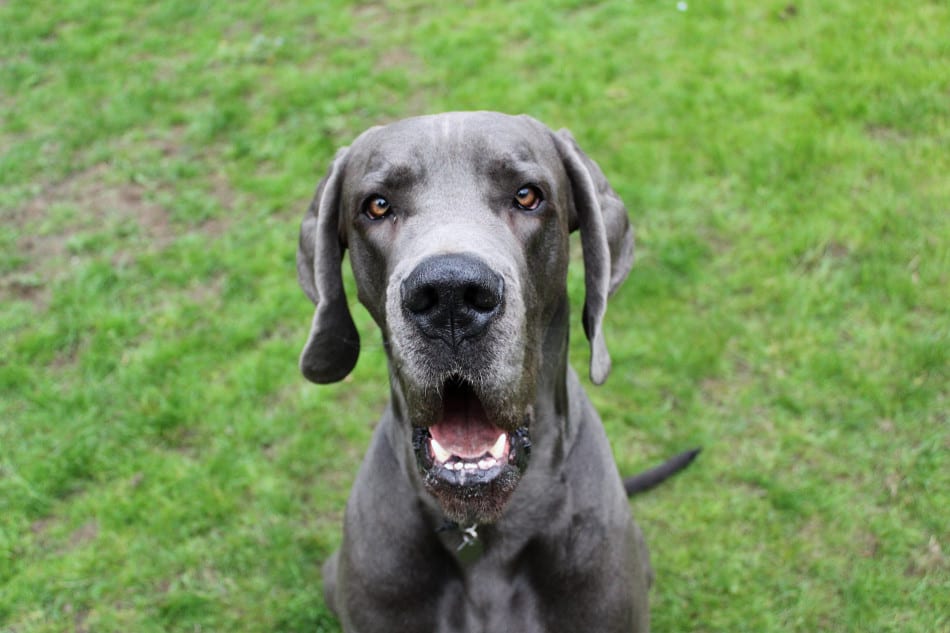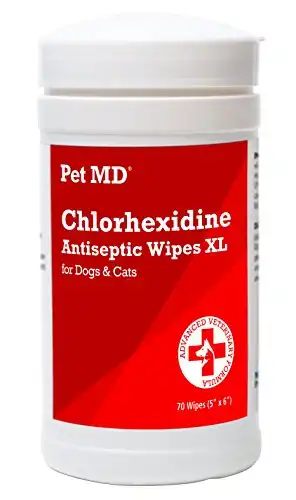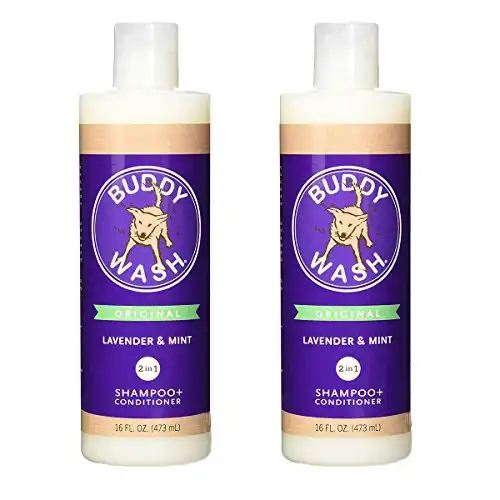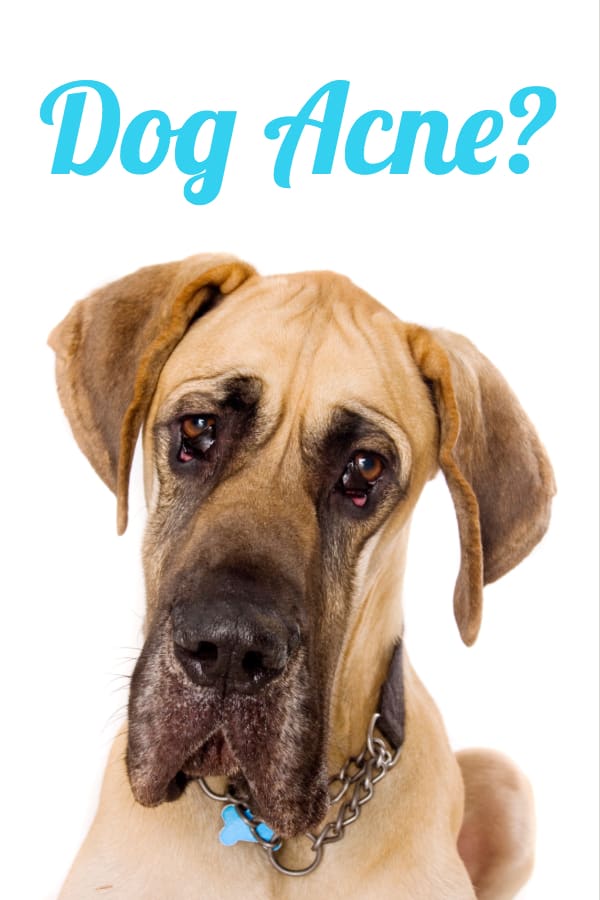
While skin breakouts are common among human teenagers, our beloved Great Danes can also experience bouts of acne as well. The good news is that this condition is usually temporary and can be easily relieved.
What are the best ways to get rid of Great Dane acne?
The majority of Great Dane acne cases can be resolved through the use of medicated wipes. While more severe or chronic cases may also require the use of antibiotics or oral steroids, this is less common when the condition is treated early.
While the basic treatment for acne may be simple, it begs the question of why our Great Danes get acne in the first place!
These pre-moistened wipes are one of the best ways to treat puppy acne, hot spots, infections, cuts, abrasions, and insect bites.
Table of Contents
Why do Great Danes get acne?
It was long believed that dog acne was similar to acne found in humans. With rapidly fluctuating hormones being the primary reason for skin outbreaks. However, more recent research is pointing to other causes!
For starters – it’s clear that acne affects certain breeds more than others (Great Danes being one of those). If simple hormone fluctuations were the source of dog acne, then you would expect to see similar rates of occurrence across all breeds.
Secondly, it’s apparent that dog acne concentrates in particular areas. Notably the area around the muzzle, which frequently comes into contact with other surfaces. Think about that – anytime a dog eats, plays, etc… their muzzle is the main point of contact.
It’s hypothesized that this repeated contact leads to inflammation of the hair follicle, which in turn ruptures and allows bacteria to enter.
The area becomes more inflamed due to the bacteria and leads to the appearance of red bumps around the muzzle/chin area. Voila! A case of “dog acne” has been born.
I should point out that it’s also possible that these red bumps are due to other sources (particularly allergies). However, these cases are less common and require assistance from a veterinarian to help pinpoint the actual source.
What are the best ways to treat dog acne?
Treatment #1 – Medicated Wipes
The first and most obvious approach to treating a case of dog acne is to leverage medicated wipes. These help to sterilize the affected area and remove the bacteria that are creating inflammation.
While many recommend getting benzoyl peroxide gels for treatment, I’ve seen great results using simple Chlorhexidine wipes. Use them 2-3 times per day to gently wipe down the affected area, and typically you’ll see a great improvement in less than a week.
Thanks to their large size and great brand, I’d recommend taking a look at the XL Chlorhexidine wipes from PetMD (link to Amazon).
These pre-moistened wipes are one of the best ways to treat puppy acne, hot spots, infections, cuts, abrasions, and insect bites.
Treatment #2 – Keep it Clean!
In addition to medicated wipes, another key area to consider is reducing the amount of bacteria on surfaces that would commonly contact your dog’s chin i.e. their bowls. Knowing that your dog is eating from their bowl 2-3 times per day, and drinks out of it many more times, then those are great places to start!
If you’ve never washed your dog’s bowls, don’t feel guilty. I’ve talked to many fantastic pet owners who were great at focusing on the big items of caring for their Great Danes but overlooked the simple task of cleaning their dog’s bowls.
In the event that you’ve never cleaned their bowls, you’ll probably want to start with a good soaking. Allow for a long soak in hot soapy water to loosen up the caked on bits, and then give it a good scrubbing!
More severe cases might require a highly diluted bleach solution (1 part bleach to 30 parts water) to fully kill any bacteria. Allow it to soak for 10+ minutes, then give it a good scrubbing out and plenty of rinsing with fresh water. Allow the bowls to dry before using them again.
Once you’ve got the bowls back in a reasonably clean state, you can use a simple scrub with hot soapy water each day to keep the funk from building up 😉
Treatment #3 – Check your Shampoo
In addition to keeping your dog’s bowls clean, it’s also important to keep your Dane clean. Before you run off and call me crazy – hold up! This is more important than you think…
Yes, all dogs get dirty and need baths. But it’s not just removing the dirt for the sake of cleanliness. How often and what you bathe them with can make a big difference.
Using a harsh, non-dog-specific shampoo could very well be drying up your dog’s skin. Dry skin is more irritable and could make them more susceptible to cases of dog acne.
So with that, make sure that you’re using a good dog-friendly shampoo before moving on. If you’re not sure where to start, I’d recommend taking a look at this one from Cloud Star’s Buddy Wash.
On the flip side, simply bathing your Great Dane too often could also be drying up its skin and increasing the chances of inflammation.
What do I do if my dog’s acne gets worse?
For starters – don’t do the human thing! Avoid trying to pop those pimples, bumps, etc… whatever you do!
Popping them only runs the risk of exposing them to more bacteria and furthering the spread of inflammation (and bumps).
Instead of trying to take things into your own hands (literally), this would be a good time to visit your veterinarian if the medicated wipes and cleanup didn’t improve or resolve the issue.
Veterinarians can perform more in-depth visual inspections, cultures, biopsies, and other means to locate the ultimate source of the breakout. For advanced treatments, they may move to the use of oral or topical steroids, supplements, or possibly even antibiotics.
If it’s not acne, then what is it?
While acne is by far the most common source of bumps on your dog’s muzzle, there are also other potential causes.
While this is not an exhaustive list, it does cover a few of the most likely candidates. Of course, leave these diagnoses to a licensed veterinarian if it comes down to it.
- Ringworm – While not life-threatening, ringworm does not have a good look! It is characterized by scabby, inflamed circular hairless patches of skin.
- Mange – An inflammatory disease caused by mites inhabiting the hair follicle and causing lesions and/or infections.
- Strangles – Resulting from an autoimmune condition, strangles is characterized by deep sores (often located on the face). In addition to their face, swelling may also be present in the groin.
Additional Common Questions
- Can I use hydrogen peroxide for dog acne treatment? Hydrogen peroxide can be overly harsh, so stick to benzoyl peroxide gels or Chlorhexidine wipes. These products are very reasonably priced and should be available over the counter without a prescription.
- Can I use coconut oil for dog acne? While coconut oil does have mild antibacterial properties, it would not be your best choice for clearing out infected hair follicles. In fact, it’s likely that coconut oil would cause bacteria to remain trapped in the pore and create more inflammation.
- Is dog acne contagious? No, acne is not a contagious condition. However, if it’s the result of environmental factors e.g. dirty food and water bowls, then you very well could see it arise in other dogs if they’re also using the same bowls.




Hi Zach, I am on my 4th Great Dane, my breed of choice. My current Dane is a rescue. She is a real handful… I have had her for almost 4?years now… she is not user friendly with any other animal. It breaks my heart. Her abuse as a young pup must have been too much. I don’t have a dog trainer in my town that is good enough to help my train get up. So we are secluded at home… that is my one big sad issue. No appropriate training for her in my town.
I’m sorry to hear that she’s not doing well. Are you looking for standard obedience training or something more specific to address behavioral issues?
How do you get your great dane to sit still or not lick it while trying to apply them!!!!
Try to hold their mouth shut gently and they’re so smart after a few times they start to understand but will still try and lick when you turn your head lol